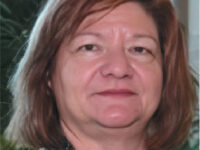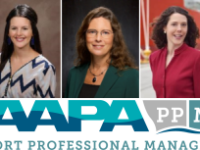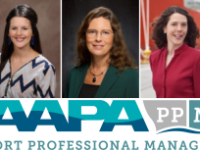Time for a Consult?

Bringing on a consulting service might seem a bit pricey – but sometimes the alternative is even pricier. Here are the keys to making these relationships work for your port.
Federal grant money provides a powerful boost to ports, strengthening their facilities and operations. However, even with the large amounts of federal dollars available, the application process for every grant is intensely competitive. The money is out there, but it’s no simple task to secure it.
For ports, finding the time for their team members to set aside their daily responsibilities to manage the grant application process can be an impossibility. There is too much pressure to do other things. As a result, many ports turn to outside consultants for help.
Steve Ribuffo, director of the Port of Alaska in Anchorage, notes that the return can be great. For instance, his port hired a consultant starting in 2019 and since then has earned $118.7 million in federal grants, while spending approximately $300,000 on the grant writer’s services.
“That’s a pretty good return on investment,” he said. “For us, it’s worth every penny.”
However, partnerships are not always so productive. For ports and the consultants they hire, success means ensuring the fit is right. Cultures, missions, and goals all must align.
The Hiring Question
Kevin Keller, HDR’s intermodal transportation lead, said the question of whether to seek out a consultant for help frequently comes down to the availability of staff and resources that a port has to devote to a grant application. If the port has a grant writer who is experienced with a particular grant program, then it might not have a need for a consultant for support.
“However, our experience is that most ports don’t have those staff just sitting around. They don’t have that deep bench and experience,” Keller said. “And that’s where the cost effectiveness of bringing a consultant really pays off in the long term.”
Keller said a key advantage to enlisting a consultant is tapping into their capacity to devote the necessary focus to a grant application.
“No matter how large or small a port is, the people who work there wear many different hats,” Keller said. “They have a lot of distractions. They have their everyday business to take care of and a consultant can help fill in those gaps – can help focus on that specific grant application for that specific project.”
Similarly, Steve Elmore, managing director, business development and advisory services, Fresh Consulting, said, “It’s generally true of consultancies that they’re giving you horsepower that you don’t normally have when you’re trying to get something accomplished.”
Ribuffo said weighing whether to hire a consultant centers on the relative costs of a consultant against the potential return on investment of a grant and the likelihood of success with available grants. For a small staff, Ribuffo said, a consultant helps provide “a fighting chance” in the highly competitive grant application process.
Elmore said self-awareness is critical for ports facing the grant process.
“As an organization, it’s like, ‘What is our capacity to handle what’s in front of us? We see a particular grant, we want to pursue this thing, but do we have the resources available? What is the impact on us as an organization?’” Elmore said.
Once the decision is made to hire a consultant, the selection process can be dizzying. Elmore said connecting with other ports can be an invaluable part of hiring a consultant, particularly when the previous collaborations have tackled similar projects.
Elmore said you want to avoid an ill-fitting partnership that takes “an emotional toll” on an organization.
“When you’re picking a consultancy, you should have a really good understanding of the key behaviors that you’re looking for that are going to be complementary to how your organization already operates,” Elmore said.
Fresh Perspective
When ports hire consultants, they tap into the consultant’s experience working with a variety of ports on a range of different grant applications – both successful and unsuccessful ones. That perspective can pay off in the application process.
“The grant writer who works for us does also have clients that are other ports, so they’ve got a database – for lack of a better term – of what works and what doesn’t work based on what their batting averages are,” Ribuffo said. “You get to benefit from that knowledge base.”
Elmore said there is no substitute for experience, which often means consultants can spot the “landmines” in the process and move quickly because of their familiarity with it. However, ports also will want to be sure their consultant is not simply applying a formulaic, well-worn approach to the process but tailoring the solution to the port’s unique circumstances and using creativity when needed, he said.
Ribuffo said experienced consultants can “ground you in the reality of your probability of success.”
“When you start looking at some of these things, it’s easy for us to see that there’s a nice pot of money, and it looks big enough for everybody to get a share of it, but you would be surprised how noncompetitive you could be if you haven’t thought through how to tell the story,” Ribuffo said.
Consultants can mind the intricate details, such as key words or other critical points that “you really need to nail” in a grant application, Keller said. In fact, the requirements for grant applications can prompt ports and their consultants to collaborate to refine projects to better fit the grant specifications.

“When you really start looking at a project being developed, a lot of times there are gaps in some of the project elements that maybe haven’t been thought of,” Keller said. “For instance, budgeting is always a challenge. How much of the grant’s funding are you going to request versus how much are you going to match? It’s those kinds of things that a consultant can really help a zero in on and focus on and make sure that you hit those criteria.”
In particular, Ribuffo said consultants can bring necessary expertise to the challenge of the benefit-cost analysis.
“From our experience, you darn near need to have an economist on your staff in order to create those in a competitive way,” Ribuffo said. “And we have found that the best source of that kind of knowledge is going to be a contractor, because we don’t have an economist on staff. So, if you want a competitive grant, while you may have a great story to tell, and it may make perfect sense for somebody to give you an award, they’re going to look at all the economic mathematics to see how competitive you are. So that part of the grants and having somebody with the wherewithal to tell that story for you in a competitive manner is critical.”
A consultant can work with a port to fine tune a project to make sure it aligns with a grant program’s specific goals. For instance, a port infrastructure and development program grant application needs to demonstrate how a project will benefit the public.
Keller said it is valuable for ports to work with consultants who have relationships with the federal staff administering a grant program. Not only does it mean they will understand the staff’s perspective, but they also understand who to ask questions when they arise.
When a port is not selected for a grant, it is valuable to explore why. That can mean comparing notes with a port that was selected for the grant or discussing your application with those who review and approve applications. Those conversations can include not just port representatives but their consultants.
“That way everybody’s learning what worked and what didn’t work,” Ribuffo said. “If you thought it was a sure thing, you can find out why it wasn’t. … You’re going to learn from the failures, too.”
Managing the Relationship
In selecting a consultant, Ribuffo recommends that ports ensure they consider intangibles in the process and try to decipher if someone will be a good cultural fit. He also said ports should make clear “who drives the train.”
“There’s a lot of danger in picking somebody and turning over your fate to them and not paying attention to what they’re doing, or giving them the impression that they’re going to make all the decisions,” Ribuffo said. “You’ve got to stay involved in the whole process in some way, shape or form, so you can steer them to do what it is you want.”
Elmore said setting expectations for a consultant at the outset and establishing from the beginning how the relationship should work is important for ports, including formalizing a reporting cadence.
“Even with a consultancy, everything is unique,” Elmore said. “People may have common experiences, but the engagement is unique. And it is so super important to set up those ground rules ahead of time and that common understanding of them, and then constantly check and tune in and not just assume that all the assumptions you’ve had up front are going to carry through the entire program.”
Elmore said a common mistake that ports make is expecting “mind reading” from consultants.
“There can’t be enough communication,” Elmore said. “Overcommunication is actually a gift in a consulting relationship. That level of transparency is really critical to building trust and to having people make appropriate plans. [Not communicating] is where a lot of things go wrong.”
Keller said a common mistake he sees is ports waiting too long to bring on a consultant, typically because they were delayed by indecision about whether or not to hire one. For instance, Keller said if a port waits 30 days to hire a consultant after a Notice of Funding Opportunity is published that only allows 60 days for developing an application, then both the port and consultant will be in a bind.
“When you wait too late to make that decision to bring in a consultant or not, that makes your whole application process challenging,” Keller said. “It presents you at a disadvantage of doing a quality complete application at that point.”
Keller said having a dedicated person on the port side to manage the relationship with a consultant can be critical.
“As a consultant, it doesn’t help if I have a call with a person one day and the next day with a different person and the next day with a different person,” Keller said. “It’s really helpful if the port has a dedicated person who can work with those dedicated consultants.”
For consultants, it’s also important to understand details about the port’s internal process for grant applications. An application can hit an obstacle at the 11th hour when a consultant finds out that a port’s board or other stakeholders will have to review the application before it is submitted, Keller said.
“As with anything else, keeping the lines of communication open is key,” Ribuffo said.
Consultants, of course, have other clients, and Ribuffo said, “you would like them to be open and honest with you about things like how many of their clients are competing for the same grant as you. How many grants in this category do you have to write because they all have the same deadline? And where am I in the stack? And how do we get through this so that we can get our application in and not feel like we’re last in your queue?” The key, he said, is that “the quality of what is being produced for you shouldn’t suffer as a consequence of that.”
“You’ve got to find people you can work with who will be upfront and honest with you,” Ribuffo said.
Even with the potential benefits that the right consultant-port partnership can bring, Ribuffo said it can be difficult from a mental standpoint for ports to look elsewhere for help. However, that reluctance likely won’t linger.
“You have to bottle your pride,” Ribuffo said. “Sometimes, you think, ‘Gosh, I wish it was us doing this instead of going out and getting some help.’ But at the end of the day, if you’re winning, then how much do you really care about that?”





